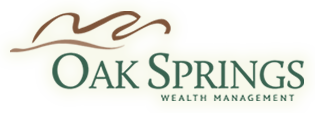Hopefully, you had the safety bar firmly in place for 2022. The DOW was down 8.8%, the S&P 500 down 19.4%, the Nasdaq down 33.1% and the Russel was down 21.6%. The only sector to exit the year in the positive was energy.
Movement in the stock market was less about fundamentals and more about the Federal Reserve’s next move. The Fed was embarrassed that it totally missed the inflation signals in 2021 and tried in 2022 to do make up work by raising interest rates to the highest level in 40 years.
Other factors impacting the market, the Biden administration’s war on energy, the Russian invasion of Ukraine and COVID in China.
The Federal Reserve is expected to raise interest rates by another .25% at both its February and March meetings.
While the Fed is fighting inflation the real problem may develop as deflation except for food and fuel. Consumers have slowed spending and increased personal debt while manufacturing began slowing during the fourth quarter. Employment has remained strong despite the Fed’s effort to increase unemployment. There remain more job openings than available workers.
Eggs have become the new bitcoin. Inflation is moderating except when it comes to food and energy. Oil prices had come down as the global economy slowed. Gas prices were brought down in the US by the release of oil from the Strategic Petroleum Reserve. Expect oil prices to start back up as shortages will become a problem globally. Food prices will stay inflated because energy is an integral part of food production and delivery.
As we move into 2023 areas of the world will lose access to fertilizer made in Russia and China. Food shortages are expected in Africa, South America, and parts of Asia. Brazilian and Chinese companies are major players in US food production and may want to ship food grown in the US to other parts of the world.
The Chinese economy has for the past 20 years been the engine that pulled the world out of economic downturns. But the Chinese economy is faltering. China’s real estate market is in collapse and manufacturing has been slowed by the zero covid policy. The Chinese communist party ended the zero
covid policy in November. It was sudden and messy and has resulted in a massive explosion of covid cases and deaths. China’s debt situation makes the US government look thrifty.
Problems we may see developing in 2023.
The Federal Reserve has a history of getting it wrong. The impact of rising interest rates usually shows up 6 months after the increase. The Fed likes to steer by looking in the rear-view mirror at trailing data. Expect a recession in 2023. Covid could spread from China in the form of new variants. Food and fuel shortages could become real problems outside of the US but drive-up prices in the US. The search for food could create more illegal entry at the southern border. There is the threat of a credit crisis developing around the world. Foreclosures and defaults are expected to rise in the US. The fighting in Ukraine could expand to surrounding countries.
The Oak Springs portfolio was heavily weighted to energy, commodities, gold, and dividend paying positions during 2022. During the second half of the year, we exited positions outside of the US and during the fourth quarter began to take a position in the longer maturity government bonds.
The bond market was inverted for most of 2022. Inversion means the short duration bonds were paying a higher rate on interest than the longer-term bonds. That is because the bond market expects the Federal Reserve to be forced to reverse course on interest rate hikes and begin to reduce those rates as the economy slips into recession. 100% of recessions are preceded by an inverted yield curve.
For the beginning of 2023, our portfolio will continue to lean on energy, commodities, gold, financials, and dividend paying positions. Treasuries will become a bigger position. We will remain underweight in growth until the second half of the year.
Expect the stock market to continue the rough ride. The market will be closely monitoring the earnings of companies reported during the first quarter to determine how badly the US economy has been hit by the Fed’s rate hikes.
As unfriendly as the investing environment might seem, remember, if there is no risk there is a limited opportunity for gain. The positions we are taking in our portfolio are designed to take advantage of situations whether good or bad. That is different from picking up wallets at the scene of a car crash. If there is an oil shortage or a food shortage, then we want to own oil and we want to own commodities used to grow food or generate energy. If there is a recession, then we want to own gold and treasuries. That’s our portfolio.
Categories
Archives
- July 2025
- April 2025
- January 2025
- October 2024
- July 2024
- April 2024
- January 2024
- October 2023
- July 2023
- April 2023
- January 2023
- October 2022
- July 2022
- May 2022
- January 2022
- October 2021
- July 2021
- January 2021
- October 2020
- April 2020
- January 2020
- October 2019
- July 2019
- April 2019
- January 2019
- October 2018
- July 2018
- April 2018
- February 2018
- October 2017
- July 2017
- April 2017
- January 2017
- November 2016
- September 2016
- July 2016
- May 2016
- February 2016
- January 2016
- December 2015
- November 2015
- November 2014
- August 2014
- July 2014
- June 2014
- May 2014
- April 2014
- March 2014
- October 2013
